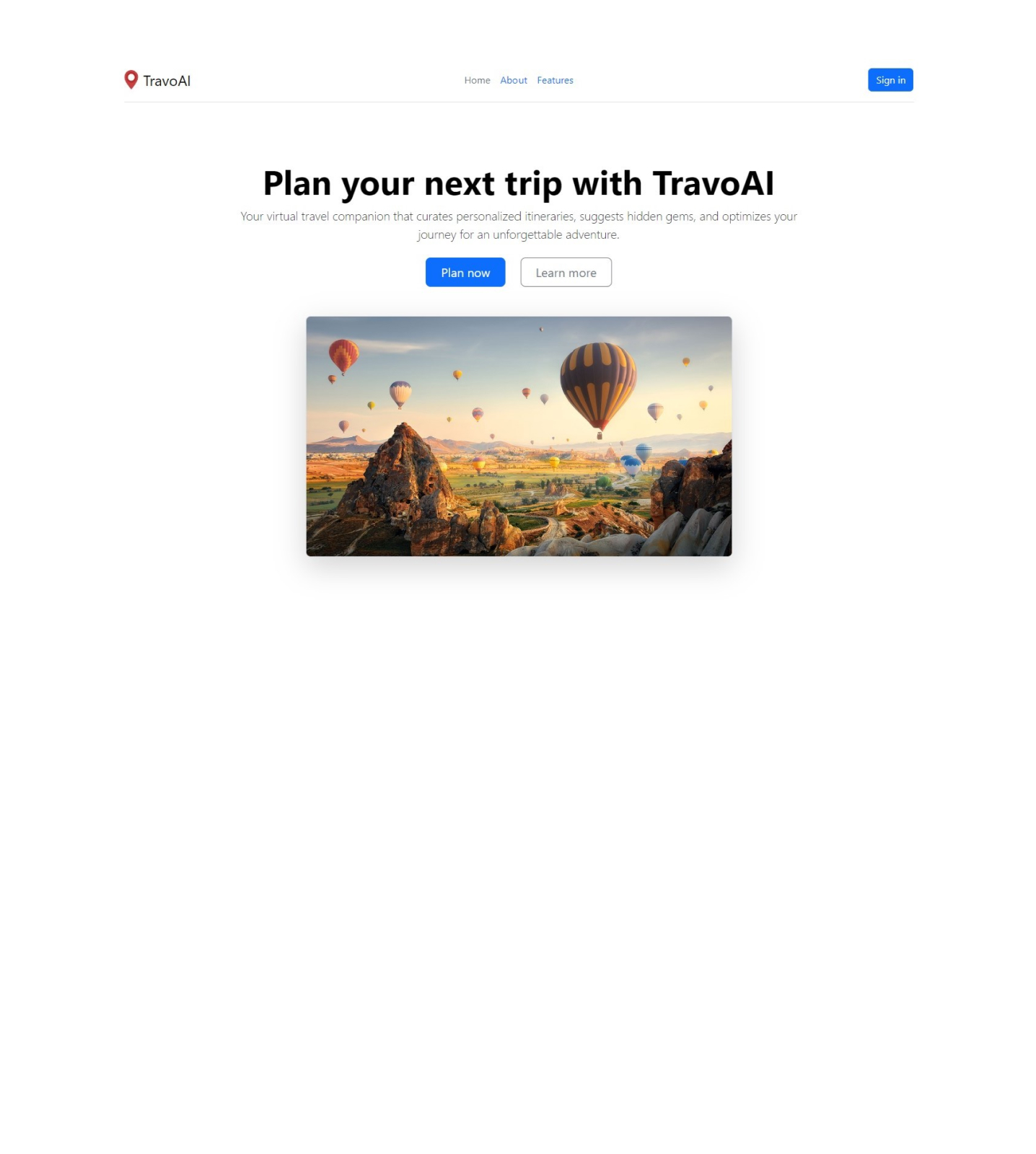

By: Donald Lee, Vaibhav Sharma, Pranav Karthik, and Rosa Chen
Date: May 2023
Travelling is fun, but 67% of travelers believe planning trips is too time-consuming and often fraught with ambiguity and information overload. Whether you're traveling solo, with friends, or with family, TravoAI uses AI and takes away the hassle and uncertainty, providing you with a tailored itinerary that ensures an unforgettable journey. Users first login with Google, fill out a quick typeform inspired form with information about their trip: location, days going, budget, # of people going, group's over all budget, and group's interests. TravoAI then generates a prompt and sends it through OpenAI's text-davinci completion model which returns a full itinerary in JSON format, taking into account the group's overall interests, budget, and # of people going. The itinerary is then rendered, and the user can view the itinerary for each day, get a URL of the page to send to a friend, automatically export all the events to their Google calendar, or chat with our AI chatbot to ask questions about anything regarding their trip!
During this hackathon, we encountered several challenges that tested our decision-making and coding skills. One of the main hurdles was determining the essential features required to develop the Minimum Viable Product (MVP). We invested significant time brainstorming ideas and features, only to realize that some were not feasible within the limited time frame or did not align with our product.
In terms of coding, working with OpenAI's text-davinci completion model proved to be quite challenging. We had to optimize our prompts to speed up the process of generating the itinerary. Initially, we started with React for our frontend development. However, we soon realized that using HTML, CSS, and JavaScript would simplify data communication between the frontend and backend. By making this switch, we reduced the need for two servers and but also lost some time refactoring our code accordingly.
Moreover, it was my first time using EJS, so learning the syntax and rendering data received from the backend was initially difficult, but I persevered and eventually grasped the concept.
Despite the time constraints and the need for last-minute adjustments, we managed to complete our project by sacrificing a lot of sleep. However, collaborating together was an enjoyable experience, and we are proud of the project we made! :)
If we have more time in the future, we may consider implementing a business model for TravoAI. This model could offer a highly effective marketing platform for businesses seeking to attract more visitors. For instance, if a tourist destination like Science World aims to increase its tourist footfall, we can suggest Science World as a top result to individuals planning a visit to Vancouver. In this case, the business would pay a small percentage of their revenue for each person who visits Science World as a result of using TravoAI. This approach creates a mutually beneficial arrangement where businesses gain increased visibility and potential customers, while TravoAI generates revenue through these partnerships.
Additionally, we had plans to implement bus routes, costs, reviews, and images into the itinerary. However, due to time constraints, we were unable to include these features. We also considered other functionalities, such as weather updates, eco-friendly accommodation options for environmentally-conscious travelers, a booking system for flights, hotels, and attractions, a feedback mechanism for users to provide input on itineraries for future improvements, and a feature to connect solo-travelers heading to the same location, facilitating opportunities for making friends and meeting new people.